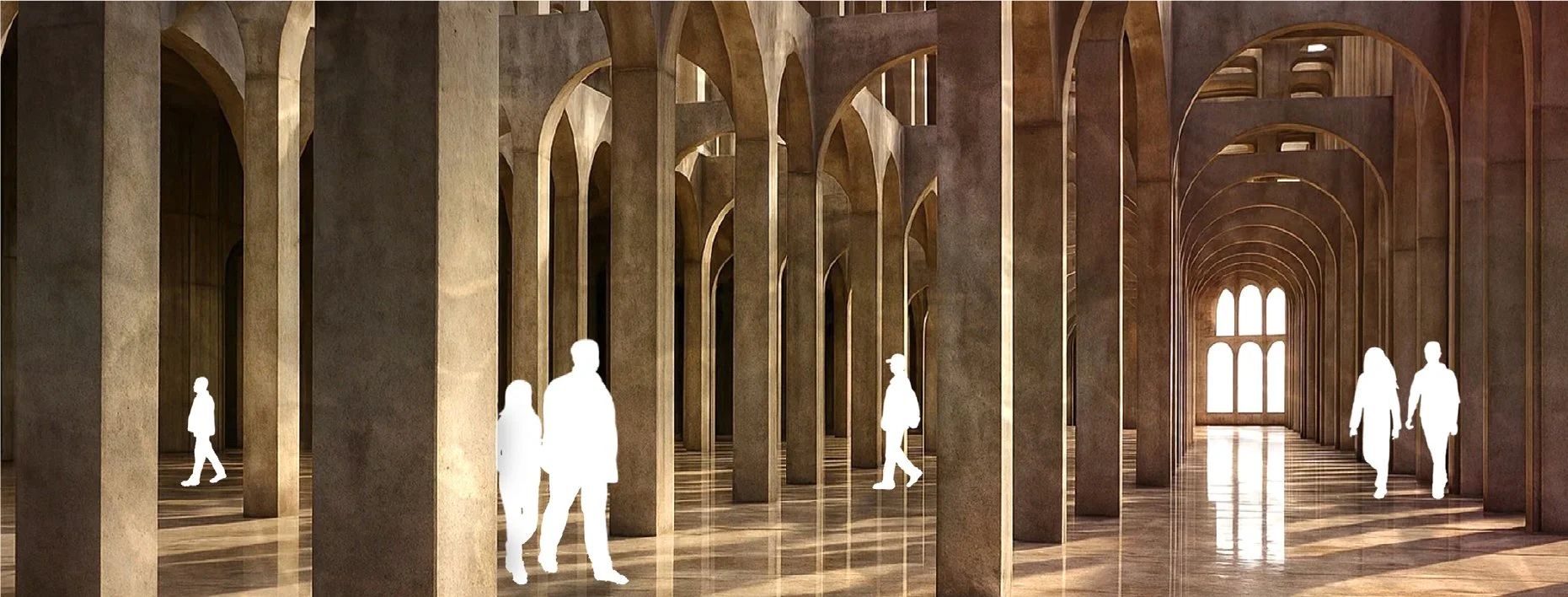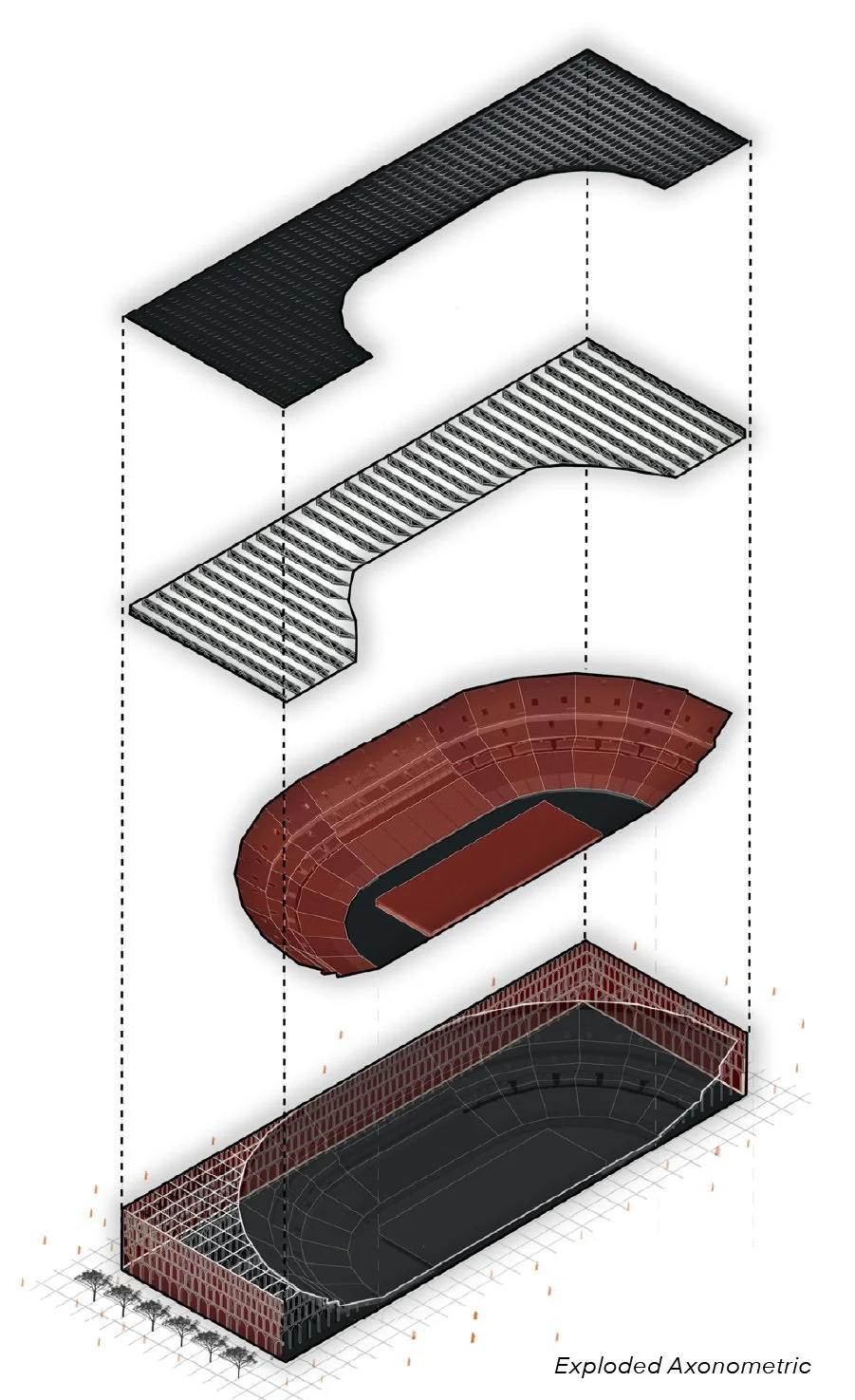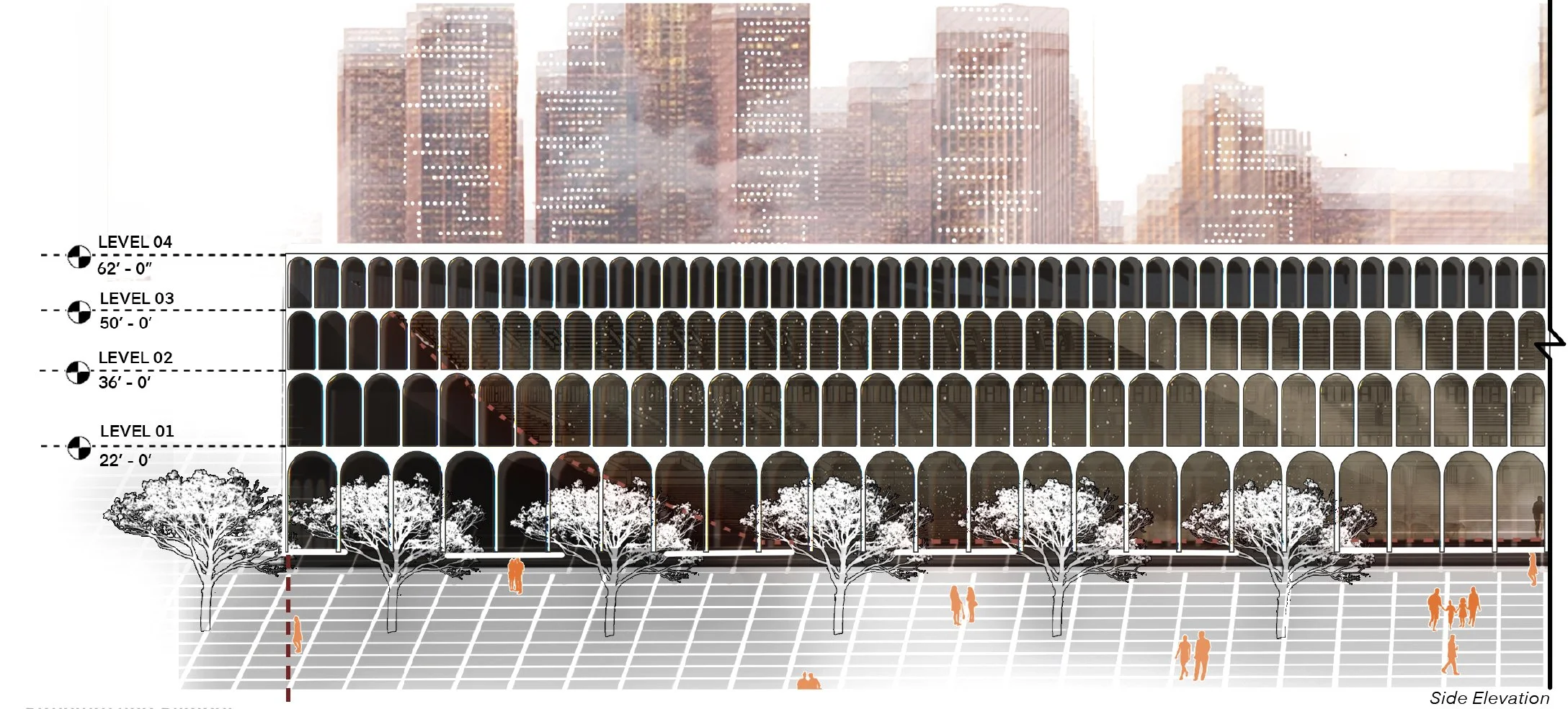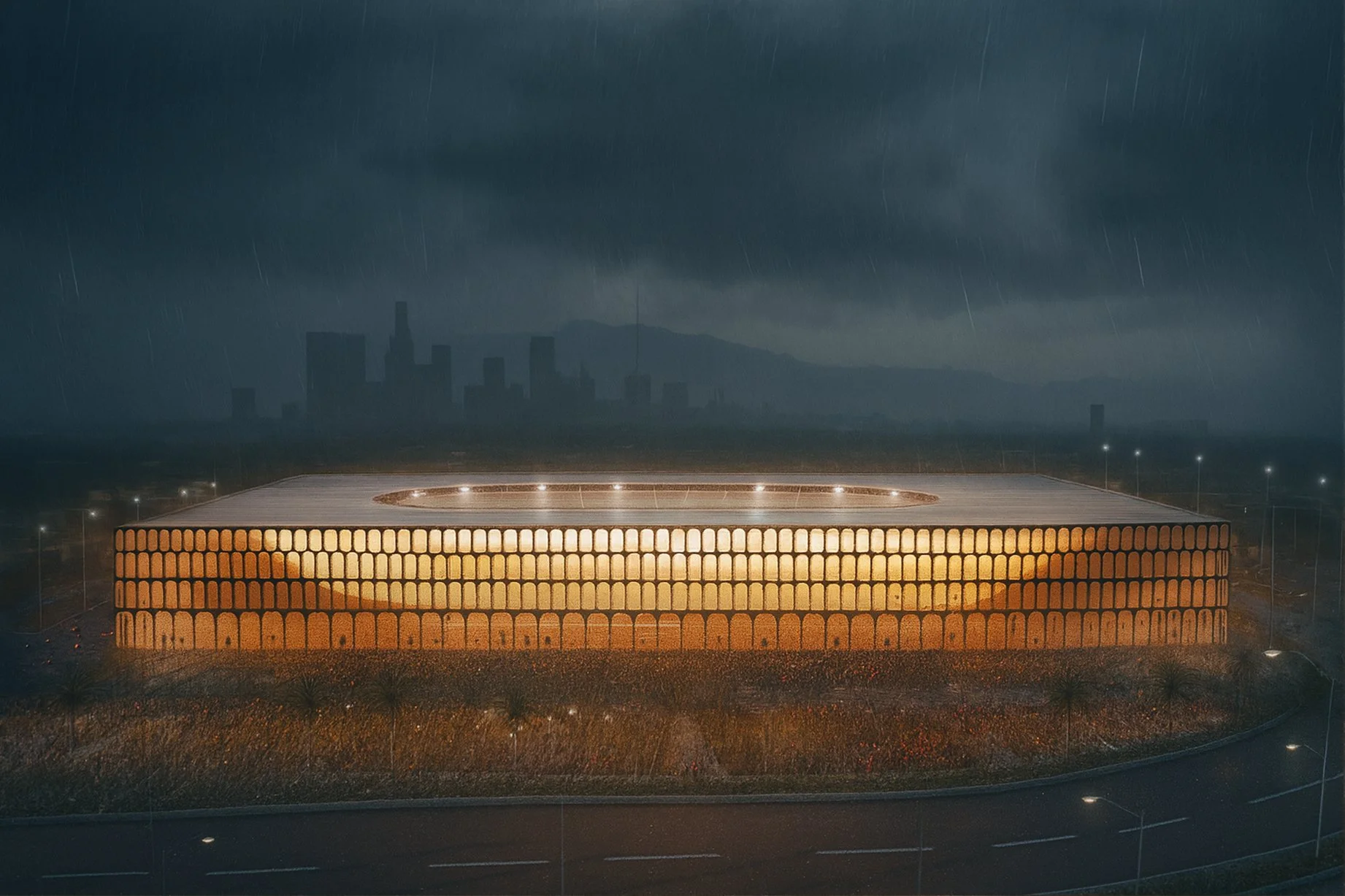
Between Spectacle and Silence
When an artist who has reached the highest levels of music, fashion, and architecture sets out to create a live experience that transcends the predictable scale of the stadium concert, the result must be more than a performance—it must become a cultural event. The challenge was twofold: to design both a stadium-scale environment and an immersive stage experience shaped by the artist’s manifesto, playlists, and evolving creative vision. Drawing on multiple historical storylines and visual cues, the project sought to merge architecture and performance into a single transformative experience.
Project Size
518,000 sf
Location
Multiple Proposed Locations
A New Kind of Stadium
We were invited to develop a new kind of stadium—one that could serve simultaneously as a site of inspiration and a tool for choreography. The ambition was to move beyond conventional stagecraft and create a structure equal to the vision of a multidisciplinary performer at the height of global influence. More than a venue for immediate use, the stadium was conceived as a timeless vessel, adaptable to future performances and capable of transcending its era, its creator, and even its own events. It is a typology that is both historic and contemporary, designed to mystify, captivate, and inspire awe.
The project emerged through close collaboration between our design studio, the artist’s creative team, the lead stage designer, and master model fabricators. Together, we explored how architecture, performance, and spectacle could merge into a single, unified experience—a space where sound, light, and form converge into ritual and memory
A Contemporary Monument
From the open arenas of ancient Greece to the monumental amphitheaters of Rome, stadiums have long embodied the collective human experience. The Colosseum, in particular, became a conceptual reference: its layered arches, civic grandeur, and enduring presence resonating across millennia. Our design reinterprets this legacy in a contemporary architectural language—honoring the past while projecting confidently toward the future.
The result is a layered architecture that expresses both containment and revelation, signaling that something sacred unfolds within its perimeter. At its heart lies an elevated performance bowl, visible through cascading, rhythmic layers of stacked arches that wrap the structure in depth, light, and shadow.
Structure and Symbol
The bowl appears to hover above the ground, supported by a delicate framework of interlacing arches inscribed within a pure rectangular frame. This creates a dialogue between solidity and lightness, enclosure and openness, structure and spectacle. The arches recall ancient archetypes, yet their articulation is distinctly modern—precise, rhythmic, and refined within the clarity of the geometry.
A Teflon-coated fiberglass membrane roof shelters the space, protecting against rain and heat while maintaining visual lightness. Subtle and translucent, it complements the sculptural forms below—the organic, flowing seating bowl and the disciplined colonnade of arches that hold the architecture in balance.
Through this synthesis of ancient form and modern expression, the design aspires to transcend time—standing not as an artifact of a single performance or generation, but as a universal monument to the enduring power of collective experience.

A Sacred Arena
The stadium is both monument and vessel—a timeless framework for celebration, emotion, and connection. Within its perimeter, architecture and art merge to create an experience that is at once monumental and intimate, ancient and futuristic. Each performance becomes a ritual of light and sound, transforming spectacle into meaning.
The architecture is designed to outlast the event, enduring as a beacon of creativity and unity—proof that performance, like architecture itself, can resonate beyond its moment and live on in collective memory.








